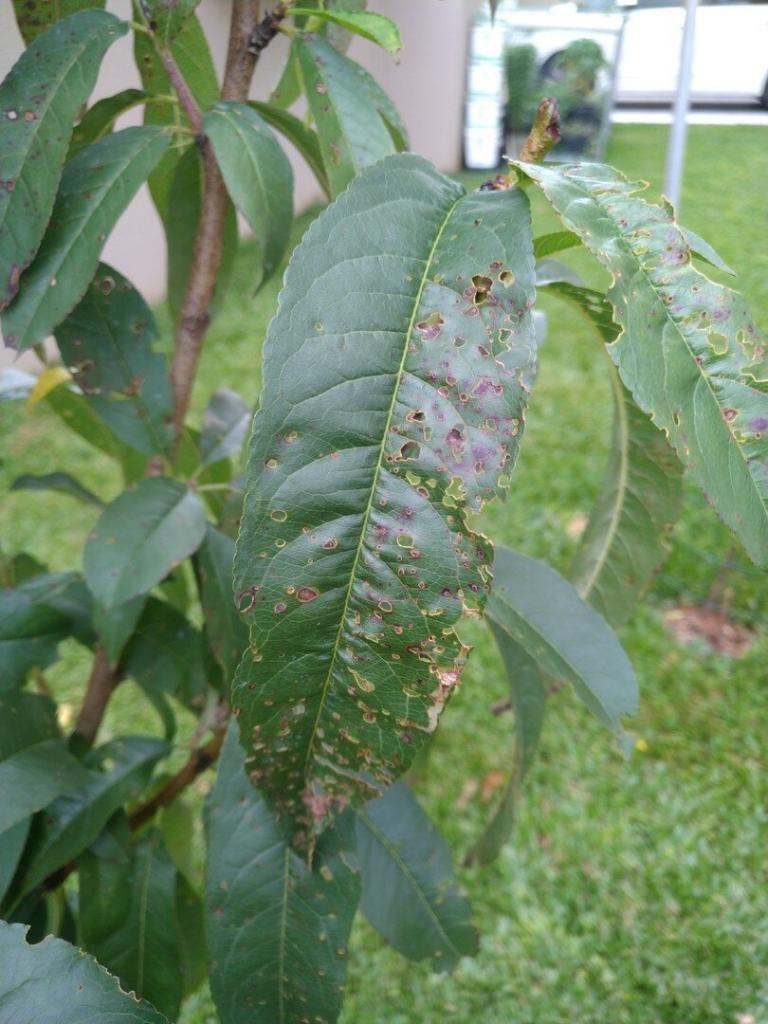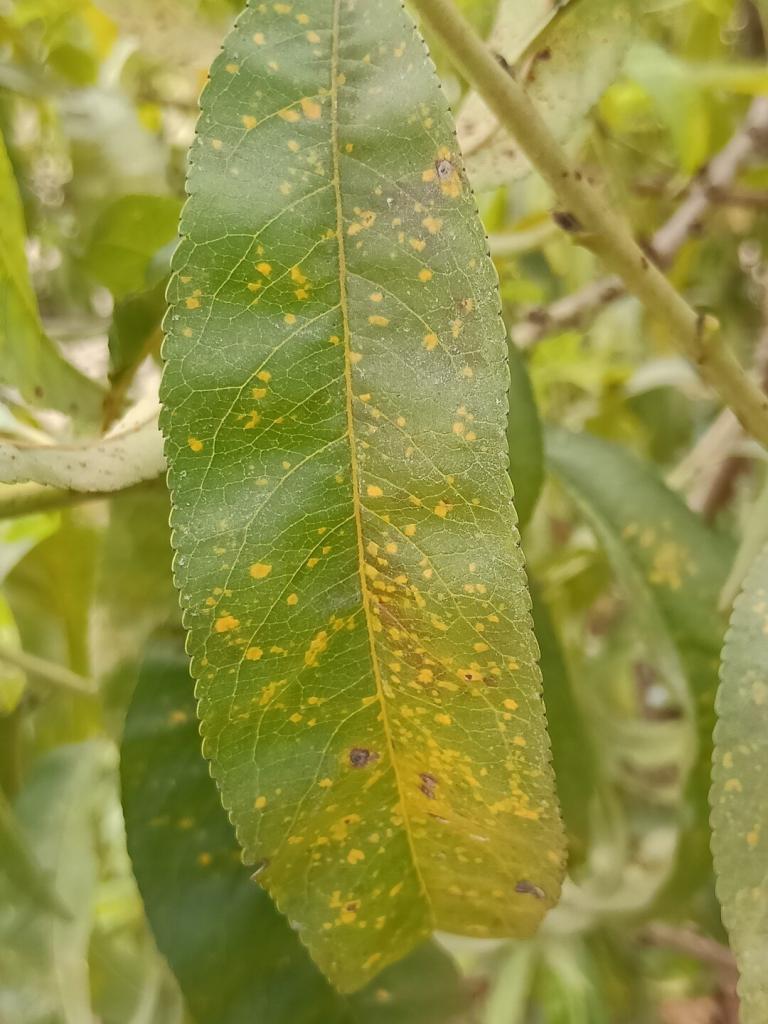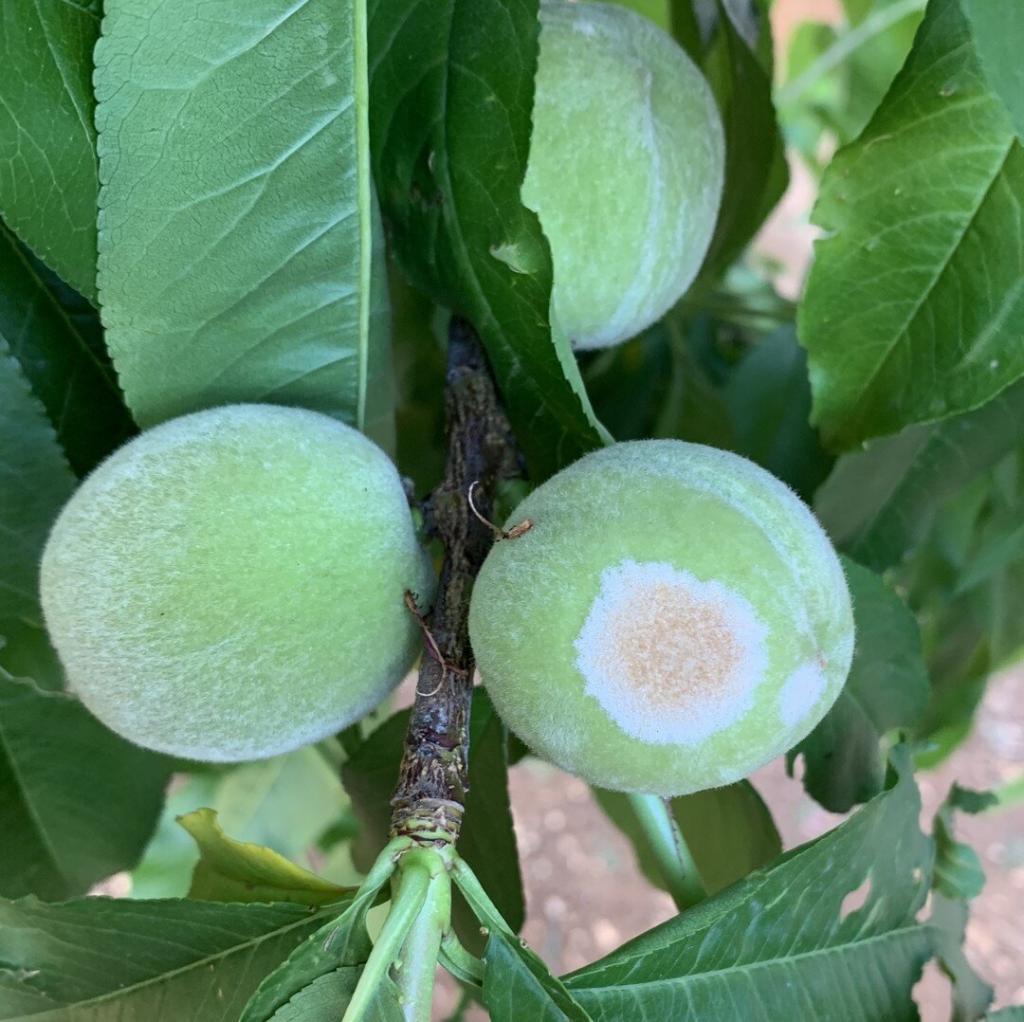Integrated pest management in stone fruit trees in early spring
Integrated pest management is a strategy that farmers can use to combat pests and diseases in their crops. This strategy has been used for many years and is still an effective way to manage pests. In the early 1990s, integrated pest management (IPM) was first introduced in stone fruit trees. It has been used ever since as a way to control the spread of pests and diseases in these types of trees. Farmers have found this method more cost-effective than other methods on the market today.
This article will cover some of the important aspects of Integrated pest management in stone fruit trees and how it can be used to improve productivity and reduce pesticide usage.
Wilsonomyces carpophilus
During the rainy winter months, the fungus attacks the dormant buds and a resin secretion is seen as a result.
The symptoms on the fruit and leaves begin as reddish spots that on the leaves soon become necrotic and dehydrated. Due to this, the inner part of the spot falls, leaving a perforated appearance (shot hole). Young green branches are affected by the disease and develop cankers. Fruits can become deformed.
Remove as much infected plant tissue as possible during the summer. At the beginning of fall, before rains start, spray with a Bordeaux mixture or copper-based fungicide. Repeat application in the spring before and during bloom. Dithianon-based fungicides can be used during the season before rain events.

Botryosphaeria
The damage can be seen on the branches in the form of gummosis. Prevention should focus on keeping stress factors low and spraying with preventative fungicides after pruning or tissue injuries.
Rust
A fungal disease that causes defoliation and decreases the fruit yield as a result. In the end of each season remove all the affected leaves and clean the orchard. During the spring, preventative fungicides applications are needed if the humidity reaches high levels. Tebuconazole, Myclobutanil, and Cyproconazole can be considered. Applications should be continued in 2-3 weeks intervals until the middle of the summer.

Powdery mildew
Preventative spraying applications should be focused on protecting the fruits. Therefore, such applications should be performed right after the pollination and until the fruit kernel hardens. After that protect the foliage by removing plant parts that are highly affected and apply fungicides.

Peach leaf curl
This disease is caused by the fungus Taphrina deformans and affects peach, plum, nectarine, and almond trees. Peaches are the most susceptible crop and hence the name. The pathogen can be found on the host’s branches, buds, and bark. It can survive harsh weather conditions, withstanding summer’s high temperatures and prolonged dryness. At the end of a dormancy period, the fungus activity extends due to significant wetting events. As the weather changes and the flower buds swell, water splashes from irrigation or rain and cause fungus spores to reach the buds. That’s where the infection takes place, despite the fact that no green tissue is present. After the pathogen enters the host, it stimulates cells, which leads to abnormal growth. Visual symptoms first appear as reddish areas on newly emerged leaves. With time, swelling and leaf distortion cause fungus spores to break outside, release into the air, and infect new tissues. As the disease progresses, leaves may fall and be replaced by a new set of healthier leaves if a period of low humidity is present during their development. The loss of leaves during springtime results in decreased fruit production, and defoliation, and could expose branches to sunburn.
Control of peach leaf curl disease revolves around prevention through the use of chemical treatments. Broadly speaking, it is fairly common to perform two spraying treatments that are timed with respect to the physiological phase of growth. It is advised that the first treatment is implemented before buds swell, and the second treatment is implemented closer to the bud swelling process. Dithianon, captan, a copper-based fungicide, and bordeaux mix.

Peach twig borer
Anarsia lineatella (the peach twig borer) overwinters on the tree and the larvae emerge in the early spring. The larvae crawl out of hiding with the swelling of the buds. The pest attack flowers, leaves, and shoots. Later generations feed on fruits as well. It is difficult to monitor for it as it is found mainly in the upper third of the tree. Look for flag leaf withering as a sign of the pest presence. Remove such affected branches to lower the pest population.
At the beginning of the spring Install pheromone traps and check them weekly. Once the peach twig borer moth was captured trigger the biofix and follow the growing degree days model. The Agrio app will monitor the progress of the pest life cycle for you. Treatment should be aimed at the larvae. The monitoring of the emergence of the pest generations will help you time the Bacillus thuringiensis and spinosad insecticides optimally. More information and recommendations can be found in our elaborated peach twig borer post.
Almond bark beetle
Weak and degenerate trees, twigs that have dried up as well as trees that have withstood water should be inspected during the scouting. The beetle, in its various degrees, will be found in the woody parts that were recently dried. Look for rubber secretions as evidence of the presence of the pest. To make monitoring more robust, use pheromone traps to capture the adults. Remove and destroy all the infected wood in order to limit the spread.
Olive scale
Start monitoring after the oil spraying is done. Monitor trees that were infested in the previous season. Apply Neonicotinoid-based insecticides when 70% percent of the eggs were already laid. It is important to remember that repetitive usage of the same insecticides can cause resistance development among the pests and therefore under-optimal results.
European grapevine moth
The European grapevine moth (Lobesia botrana) feeds on the fruit. Look carefully in places in which it is hidden and protected such as under the leaves that cover the fruit. Use pheromone traps to monitor the pest presence more carefully.
Summary
Integrated pest management in stone fruit trees is a way of managing pests and diseases. It involves the use of early detection, preventative measures, and treatment methods to reduce the risk of pests and diseases. IPM is a cost-effective and sustainable pest control strategy that involves monitoring for pests, using pesticides only when necessary, and using natural predators to control the population of pests.
Caution and careful notice should be taken when using any plant protection products (insecticides, fungicides, and herbicides). It is the grower’s sole responsibility to keep track of the legal uses and permissions with respect to the laws in their country and destination markets. Always read the instructions written on labels, and in a case of contradiction, work in accordance with the product label. Keep in mind that information is written on the label usually applies to local markets. Pest control products intended for organic farming are generally considered to be less effective in comparison to conventional products. When dealing with organic, biological, and to some extent, a small number of conventional chemical products, complete eradication of a pest or disease will often require several iterations of a specific treatment or combination of treatments.
